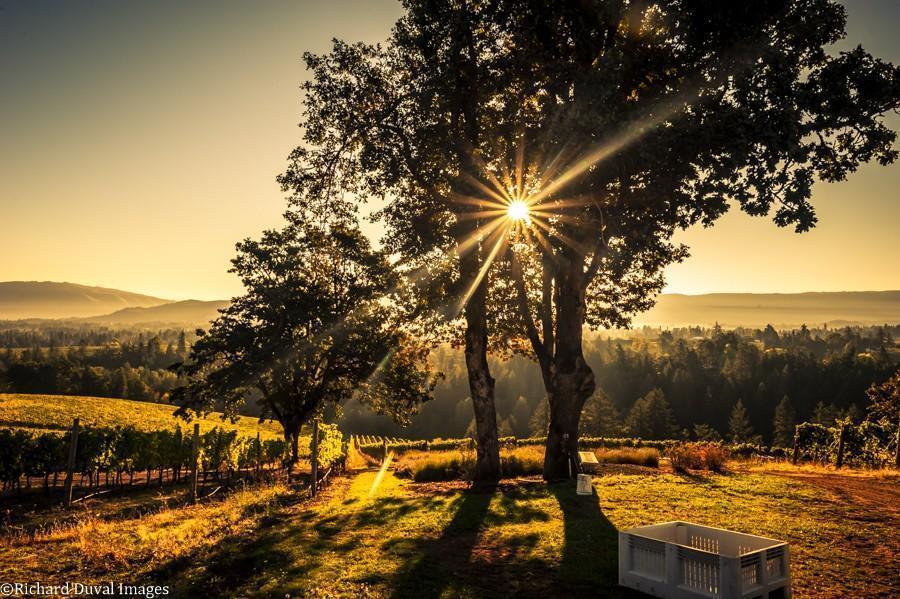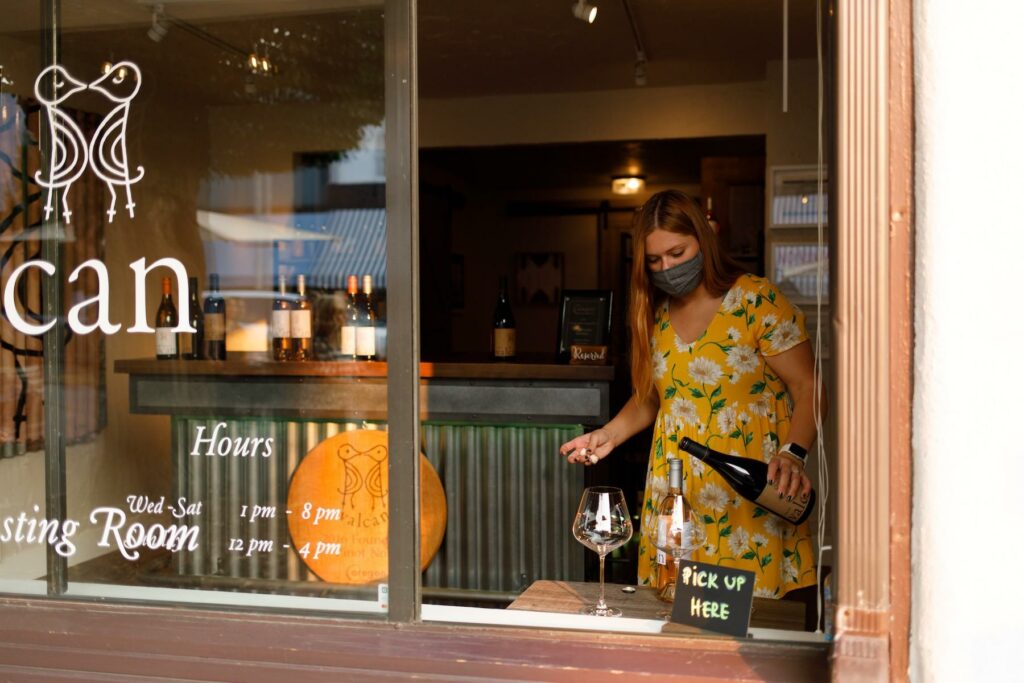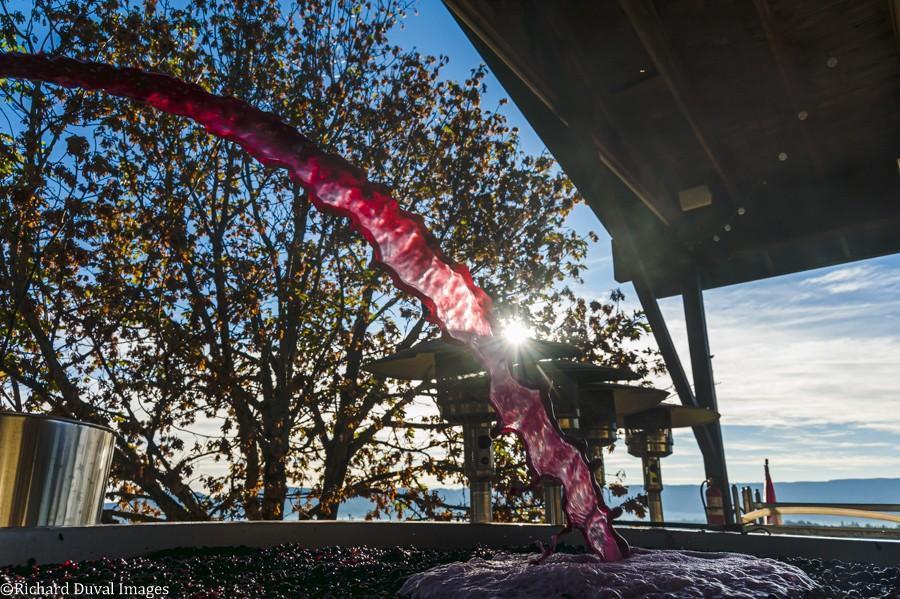
PORTLAND, Ore. — In the four-decade history of the Oregon Vineyard and Winery Report, this year’s ranks as the most sobering because the global pandemic, West Coast growing conditions during the 2020 vintage and deadly wildfires contributed to lower yields in vineyards and fewer grapes on crush pads.
The University of Oregon’s Institute for Policy Research and Engagement, which generates the report for the Oregon Wine Board, estimated the farm gate value of wine grape production fell by $80 million — off about 34 percent. Combined with the lighter crop and fears of smoke-affected wines, the 2020 harvest saw a 29% drop in grape production, about 30,000 tons less than 2019.
“Every winemaker on the West Coast would probably agree that the 2020 vintage presented some conditions we’d rather not see again,” Tom Danowski, president and CEO of the Oregon Wine Board, stated in the news release. “Nevertheless, the resiliency of Oregon growers and winemakers has made the vintage one to remember for the ways in which it called us to collaborate and cooperate, while upholding Oregon’s well-deserved market position rooted in exceptionally distinct, complex wines.”
In early September, wildfires throughout the Pacific Northwest, particularly in Oregon, made it difficult to get grapes harvested. In some instances, winemakers did not bring in grapes they feared were already adversely affected by smoke. University of Oregon researchers noted that 62% of the growers they contacted reported “impacts” from the wildfires. In the report, an estimated 18% of wineries detected the taste of ash in their 2020 vintage.
“Winemakers will not release wines that won’t enhance the brand reputations they have been building for years and want to uphold,” according to the Oregon Wine Board.
Acclaimed climate researcher Greg Jones, recently appointed as CEO of his family’s storied Abacela Winery in Roseburg, pointed out that an unusual offshore flow pushed the wildfires and smoke.
“The wind event was extremely rare, with only a handful of similar events in our data record,” Jones noted. “By September 7th, strong winds (30-60 mph) from the east moved over numerous mountainous areas, warming, drying and increasing in wind speed. The combination caused fires to explode from smoldering small fires into raging, fast-moving fires and spread rapidly, covering much of the state with smoke.”
In addition:
- Yield per acre decreased by 24%, which was attributable to cooler late spring weather, reducing cluster sizes and weights.
- Case sales were roughly flat, growing less than a percentage point of 0.7% to 4.69 million cases across all channels. In 2019, when case sales were 4.66 million, it marked a leap of 1 million cases over a two-year period from 3.60 million in 2017.
- Sales through direct-to-consumer (DtC) channels declined by 27% overall. Some of those tasting room losses were offset by wine club sales and other channels.
Oregon wine direct-to-consumer sales up 31%

However, the Oregon wine industry weathered the past year in several categories. Oregon’s DtC shipments were up 31%, which is ahead of the national average of 24%, and volume growth increased more than 9% nationally. Reports indicate Oregon wines recorded the highest level of national market penetration in the state’s history as sales to national distributors increased 3.5%.
And international sales went up 24%. Canada remains Oregon’s No. 1 export market, accounting for 46% of the state’s export sales. The 65,459 cases of Oregon wine sold to Canada during 2020 represent an increase of 23%, which industry leaders attribute to “residual effects of pre-COVID promotions.”
Nielsen research also shows Oregon leading the U.S. in the average price of a bottle of table wine sold in retail stores. The category is viewed as the “premium price tier,” and the 52-week period ending June 5, 2021 had Oregon with $16.72 per bottle, Washington at $10.42 and California at $7.84.
The Oregon Wine Board cited figures by Bay Area industry analyst Danny Brager, a former Nielsen executive, who reported the average price per bottle of Oregon wine shipped to a consumer was $41.88, second only to Napa Valley wines at $59.92 per bottle.
Oregon grows to 995 wineries under Danowski

This marks the 10th year since the Oregon Wine Board hired Danowski as its president and CEO, and the University of Oregon graduate has seen his industry celebrate a seemingly endless string of success stories — starting with his stabilizing of the OWB team. The semi-independent state agency experienced four leadership changes in the year prior to his arrival. Danowski came to the Oregon Wine Board as a marketing executive with a résumé that included Seattle’s Best Coffee, Coca-Cola, luxury brands Gene Juarez Salons & Spas and Cutter & Buck, and most importantly, eight years with Ste. Michelle Wine Estates.
While it is highly unlikely the Beaver State will surpass the Evergreen State in terms of vineyard acreage, it is closing in on its neighbor to the north in terms of brands as the Washington State Wine Commission counts 1,050 licensed wineries.
According to this week’s report, Oregon has climbed to 995 wineries. That’s a 10% increase from 2019, and credit was given to the growth along the Oregon side of the Columbia River as well as that within the Walla Walla Valley. The Rogue Valley increased its number of wineries by 12% to 112.
There were 73 new vineyards established in 2020, giving the state 1,370 vineyards as Oregon expanded its plantings by nearly 6%, adding 2,100 acres to reach 39,531 acres. According to the Washington State Wine Commission, there are about 400 growers tending to an estimated 60,000 acres, although that acreage total is expected to drop with the next official update.
Cabernet Franc gets pricey; Gamay crop tumbles

Pinot Noir makes up 59% of that total acreage and 49% of the state’s production. And while there were small increases along the Columbia River and in the Rogue Valley, that total grape harvest fell from 105,585 tons to 75,142 tons. (Washington crushed 178,500 tons in 2020.)
Interestingly, Cabernet Franc returned the highest average price per ton at $2,432, just ahead of Chardonnay at $2,371 and Syrah $2,352. Pinot Noir checked in at $2,300 per ton.
Gamay, a variety that has received a fair bit of buzz in recent years, was next at $2,291. The grape also appeared to have suffered from the conditions more than most because while the acres planted increased from 128 in 2019 to 136 in 2020, the harvested acres plummeted from 111 to 84, and its crush was off more than 50% — 3.8 tons per acre in 2019 vs. 1.71 tons per acre in 2020.
Varieties on the rise included two stars native to the Iberian Peninsula. Albariño grew about 45% in the Willamette Valley, and it rose from 8 to 25 planted acres in the Rogue Valley, giving the state a total 139 acres devoted to the Spanish white grape. Tempranillo also got a bump from 352 acres to 376 acres.

Leave a Reply